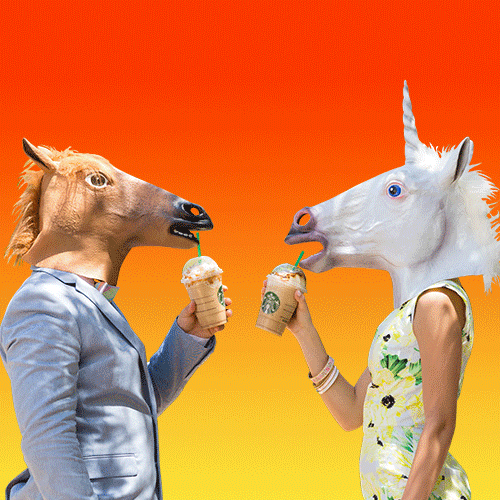
Innovative Ways for Brands to Use Gifs
Even if you don't qualify as internet savvy, you've probably seen or heard about gifs. Gifs, or Graphics Interchange Formats, are image files that repeat continuously in a short loop. It's common to see gifs used for humor - for example, a quick gif of a cat falling down. However, gifs are no longer just a tool young folks use to make jokes on social media.
As digital marketing continues to be a driving force for brand awareness and sustainability, brands must adopt the kinds of media their audiences are familiar with. That's why many brands are turning to simple media formats to keep audiences engaged. So how can designers and brand managers utilize gifs to maximize positive communication with their audience? All you need is a bit of creativity and an understanding of your audience.
Educating
While it may go against all preconceived notions about the image format, gifs can actually be used for education. Research shows that visuals propel posts into better performance on Facebook and Twitter, increasing shares and interactions on both platforms. So what better way to make dry content more palatable than by adding imagery?
In an ideal world, we'd all have time to educate ourselves about all the topics in which we are interested. But let's face it -- we're bombarded with tasks from the time we wake up until we go to sleep. Reading articles and watching videos takes time, which is why these activities are often put on the backburner. However, gifs provide an invaluable opportunity to quickly and efficiently address readers, implant an informative idea, and be done. So while it is important to have some longform content that represents your brand, information that can quickly be expressed in a gif will reach your busiest demographic.
Introducing a New Product
Sure, customers want to know about a new product before they buy it. However, it’s human nature to want to sneak a peek of it before having to read paragraphs of text. If the visual is stimulating enough, customers will then dive deeper to research a product further. The problem is, brands sometimes fail to unveil new products with pizzazz, leaving them largely unknown even after their release. Gifs do a great job of helping solve this problem. A customer may catch sight of a new product gif while browsing social media platforms like Facebook and Instagram, or scrolling through a brand's website.
American Apparel used a gif to unveil the release of its Sheer Nail Lacquer, a glossy nail polish line full of vivid summer colors. With such a colorful product, this clothing company would be crazy not to take advantage of a bright and fun promotional gif.

Summarizing News
If there is big news in your industry, customers want to hear from the brands they follow and support. More people than ever before are getting their news from social media newsfeeds. So the perfect time to post a gif is when your audience is browsing through Facebook, waiting to hear your take on an event or news story. Brands can take a clip from a video and add a line of text to quickly summarize a main point. This may also be useful after a major company event or celebration. Even the New York Times has begun using gifs to publish breaking news, including updates on the 2016 presidential race.
For brands that want to branch out and network through their social media posts, tagging other organizations that are involved or might be interested is a great ice breaker.
Storytelling
There has been a lot of talk in the branding world about the importance of storytelling. No longer are companies shoving their products at customers with overt ads. Instead, they’re telling people the story of their brand and letting supporters arise naturally. While there is an appropriate time and place for lengthier storytelling, gifs can pave the way for a better understanding. Those that know little about a brand can easily begin picking up their vibe through mini gif stories.
Oreo’s India brand exemplified how brand stories can be told through gifs with their #playwithoreo campaign. In an attempt to encourage more playfulness with their audience, Oreo posted on Twitter a colorful gif of two oreos turning in a cassette. While super simple, these kinds of gifs portray a brand’s identity, even when there is little text present. Brands can also span out to platforms like Reddit and Snapchat to get their images out in the world.
Evoking Emotion
At first glance, it may seem that purposely evoking emotions - especially negative ones - is a manipulative marketing tactic, much like the sleazy sales pitches of the past that made us cringe. However, evoking true emotion from your audience is not only mutually beneficial, it is necessary for creating a memorable space in the minds of your customers. Several neuroscience studies have shown that people are more likely to remember a message - including an advertisement - when it evokes a particular emotion or holds personal significance for the viewer. To connect with your audience on a deeper level, you have to draw out the emotions that are already within them. Gifs are incredibly useful because they can accomplish this faster than any other kind of media. For example, a gif can amplify your customer’s pain point, or evoke laughter at a problem they can totally relate to.
For designers, it's also useful to note that visuals and certain colors are especially effective in stimulating your reader's attention. Factors like saturation, darkness/lightness, and color combinations help designers covey different emotions in a specific and direct manner. Starbucks exemplifies this understanding with their vibrant and youth-targeted frappuccino gif.

Gifs are a strong tool in today's marketing environment simply because many brands still fail to use them. The idea that gifs are unprofessional, inappropriate for businesses, and only used for humor still lingers in the minds of many brand managers. To fix this, marketing teams may want to set time aside to address how gifs can be woven into their current social media strategy. By setting guidelines and pinpointing specific goals, the practice of using gifs suddenly begins to feel less silly and more strategic.
Now, some brands are taking it a step further with cinemagraphs. These images are essentially gifs doused with an extra sprinkle of beauty, like this elegant ad by designer shoe brand, Stuart Weitzman.
Ultimately, using gifs and cinemagraphs is yet another clever way to amplify brand visibility in a digital environment that is saturated with advertisements. If you want to step up your brand visibility, but aren't sure where to start, a style guide will save you time and confusion. By creating a Style Guide, you'll have all branding features in one place - including carefully chosen typography, color palettes, and logos. With this tool, you're not leaving your brand identity to chance.

